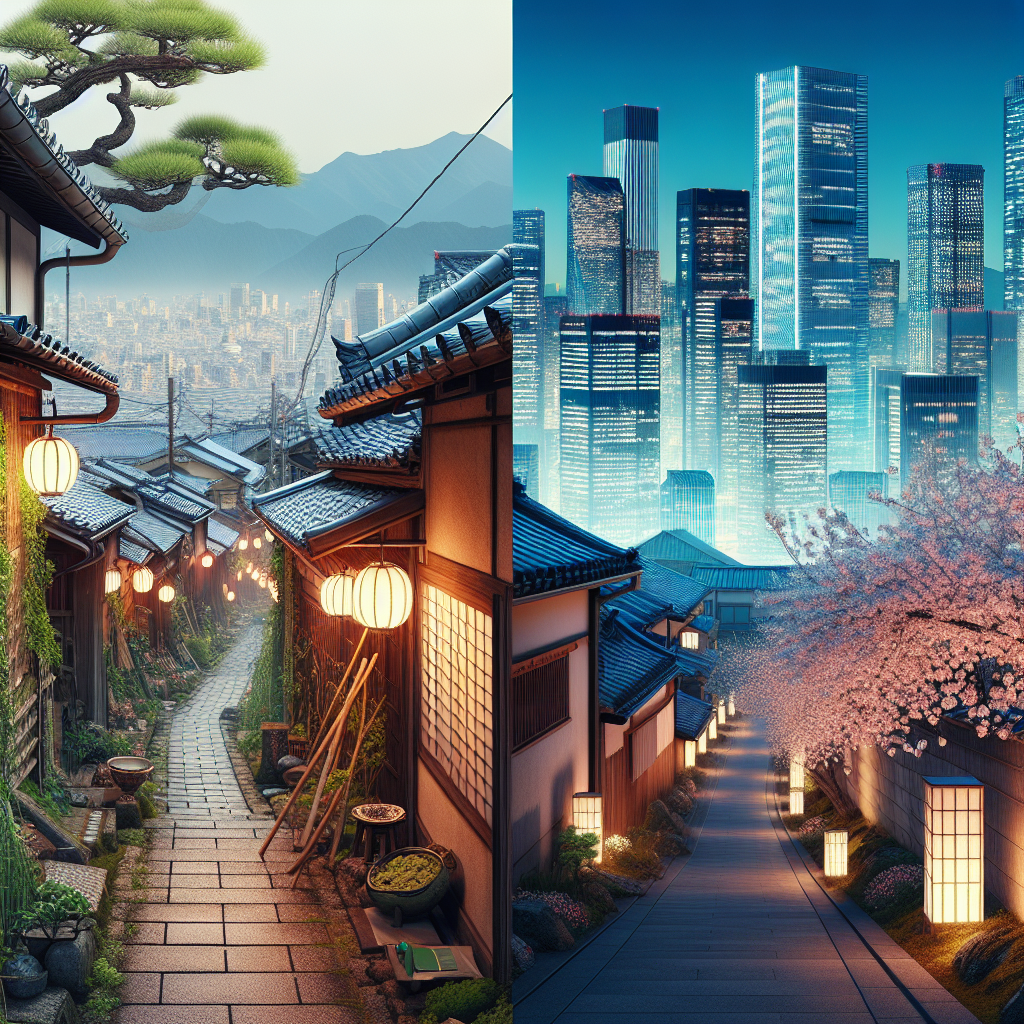Ancient Alleys and Modern Marvels: Architectural Wonders of Japan
Japan, a country where the ancient and the modern not only coexist but also complement each other, boasts an architectural landscape that is as diverse as it is stunning. From the serene beauty of traditional Japanese tea houses to the cutting-edge designs of Tokyo’s skyscrapers, the architectural wonders of Japan are a testament to the country’s rich cultural heritage and its forward-thinking vision.
The Timeless Allure of Traditional Japanese Architecture
The heart and soul of traditional Japanese architecture lie in its ability to harmonize with nature. This is evident in the design of classic structures such as temples, shrines, and even residential houses. A prime example is the Kinkaku-ji, or the Golden Pavilion, in Kyoto. Originally built in the 14th century, this Zen Buddhist temple is renowned for its stunning gold-leaf exterior which reflects beautifully in the pond before it, illustrating the Japanese aesthetic of wabi-sabi, the acceptance of transience and imperfection.
Another architectural marvel is the traditional Japanese house, known as a Minka. These houses are characterized by tatami mat flooring, sliding doors (fusuma), and wooden engawa verandas that seamlessly blend the interior with the exterior. The construction technique used in these structures, known as joinery, involves fitting wood together without the use of nails, showcasing a craftsmanship that has been perfected over centuries.
The Grandeur of Japanese Castles
Japanese castles, with their massive stone foundations and intricate wooden superstructures, are a unique blend of defensive capability and aesthetic beauty. Himeji Castle, also known as White Heron Castle due to its elegant, white exterior, is a UNESCO World Heritage site and a classic representation of Japanese castle architecture. Its sophisticated defensive features, including a complex series of gates and winding paths intended to confuse invaders, coexist with delicate architectural details that are a visual treat.
The Zen of Japanese Gardens
An integral part of Japan’s architectural heritage is its gardens, which are an embodiment of the country’s philosophy and aesthetic principles. The Ryoan-ji Temple in Kyoto is famous for its karesansui (dry landscape) rock garden, a minimalist yet profound space where carefully placed rocks and raked gravel stimulate meditation and introspection. These gardens are not just designed for aesthetic pleasure but are a physical manifestation of Zen Buddhism, inviting contemplation and a deep appreciation of the present moment.
The Boldness of Contemporary Japanese Architecture
The transition into the modern era brought with it a wave of innovation in Japanese architecture. Architects like Kenzo Tange and Fumihiko Maki have been instrumental in shaping the modern architectural landscape of Japan, blending traditional principles with modern technology and materials.
The Tokyo Metabolism movement in the 1960s and 70s introduced the world to futuristic architecture that envisioned cities with movable and recyclable structures. The Nakagin Capsule Tower, designed by Kisho Kurokawa, is a relic from this period that still stands today, albeit in a dilapidated state, as a symbol of architectural innovation.
The 21st century has seen Japanese architects like Shigeru Ban and SANAA (Sejima and Nishizawa and Associates) gain international acclaim for their minimalist designs that focus on light, transparency, and an intrinsic connection with nature. The Sumida Hokusai Museum, designed by SANAA, with its reflective, angular façade, and the Cardboard Cathedral in New Zealand by Shigeru Ban, exemplify the diversity and creativity of contemporary Japanese architecture.
FAQs
Q: What makes traditional Japanese architecture unique?
A: Traditional Japanese architecture is unique in its close relationship with nature, the use of natural materials, and its emphasis on simplicity, minimalism, and functionality. The aesthetic principles of wabi-sabi, emphasizing beauty in imperfection and transience, also play a significant role.
Q: Can visitors enter Japanese castles?
A: Yes, many Japanese castles are open to the public as museums or historical sites. Visitors can explore the interior of these castles, learning about their history, architecture, and the samurai culture.
Q: Are there any modern architectural tours available in Japan?
A: Yes, there are numerous tours available that focus specifically on modern architecture in cities like Tokyo and Osaka. These tours offer insights into the works of famous architects and the development of contemporary Japanese architecture.
Q: How has Japanese architecture influenced the world?
A: Japanese architecture has had a profound influence on global architecture, particularly in the areas of minimalism, sustainability, and the blending of indoor and outdoor spaces. The principles of traditional Japanese architecture, such as harmony with nature and the emphasis on natural materials, have been incorporated into contemporary designs around the world.
Q: What is the best time to visit Japan to explore its architecture?
A: Japan can be visited year-round, but spring (March to May) and autumn (September to November) are particularly pleasant times to explore the country’s architectural wonders. The cherry blossom season in spring and the vibrant autumn colors provide a stunning natural backdrop to both ancient and modern structures.
Japan’s architectural landscape is a fascinating blend of the ancient and the avant-garde, offering endless exploration opportunities for architecture enthusiasts. From the tranquil beauty of its traditional structures to the bold innovations of its modern skyscrapers, Japan stands as a testament to the enduring spirit of architectural excellence.
